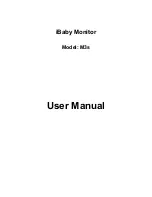
3. OPERATION
Page 45
© 1998-2007 DH Instruments, a Fluke Company
the molbox RFM (see Section 3.4.2). When switching from the measurement of
one gas to another, the old gas remaining in the circuit and the new gas being
flowed may mix for some time so that the gas flowing through the molbloc is not
purely the new gas. Erroneous measurements may result. For this reason, it is
important to purge the lines upstream and downstream of the molbloc when
changing gases. It is also important to purge the molbox RFM itself which, since
there is normally no flow through it, may trap and hold the old gas.
The PURGE function is designed to facilitate purging the molbox RFM. It sets up
the molbox internal valving so that flow can pass through the molbox RFM (see
Figure 7). In this configuration, the lines between the molbloc and molbox RFM
and the molbox RFM internal volume can be purged by simply flowing the new
gas in the normal flowing configuration. The flow resistance through the molbloc
creates a differential pressure, which causes flow through the molbox RFM to
occur, purging it with the new gas.
1. High Isolation:
Open
2. Low Isolation:
Open
3. Bypass:
Open
4. Mirorange Bypass: Open
Figure 7.
molbox RFM
Internal Pneumatic Schematic – PURGING
OPERATION
For best results, the PURGE function should be executed whenever the
species of the gas flowing through the molbloc is changed. Prior to
activating the PURGE function, set flow through the molbloc to the highest
rate that is practical. Then, with the gas flowing, activate the PURGE
function. Very small volumes of gas remain trapped (dead ended) in the
molbox RFM in the PURGE configuration. Therefore, it may be desirable to
execute the PURGE function more than once to clear these volumes by the
pressure changes caused by PURGE execution.
To access the PURGE function press
[TARE]
,
<2purge>
. The display is:
Set purge time:
15 sec
















































